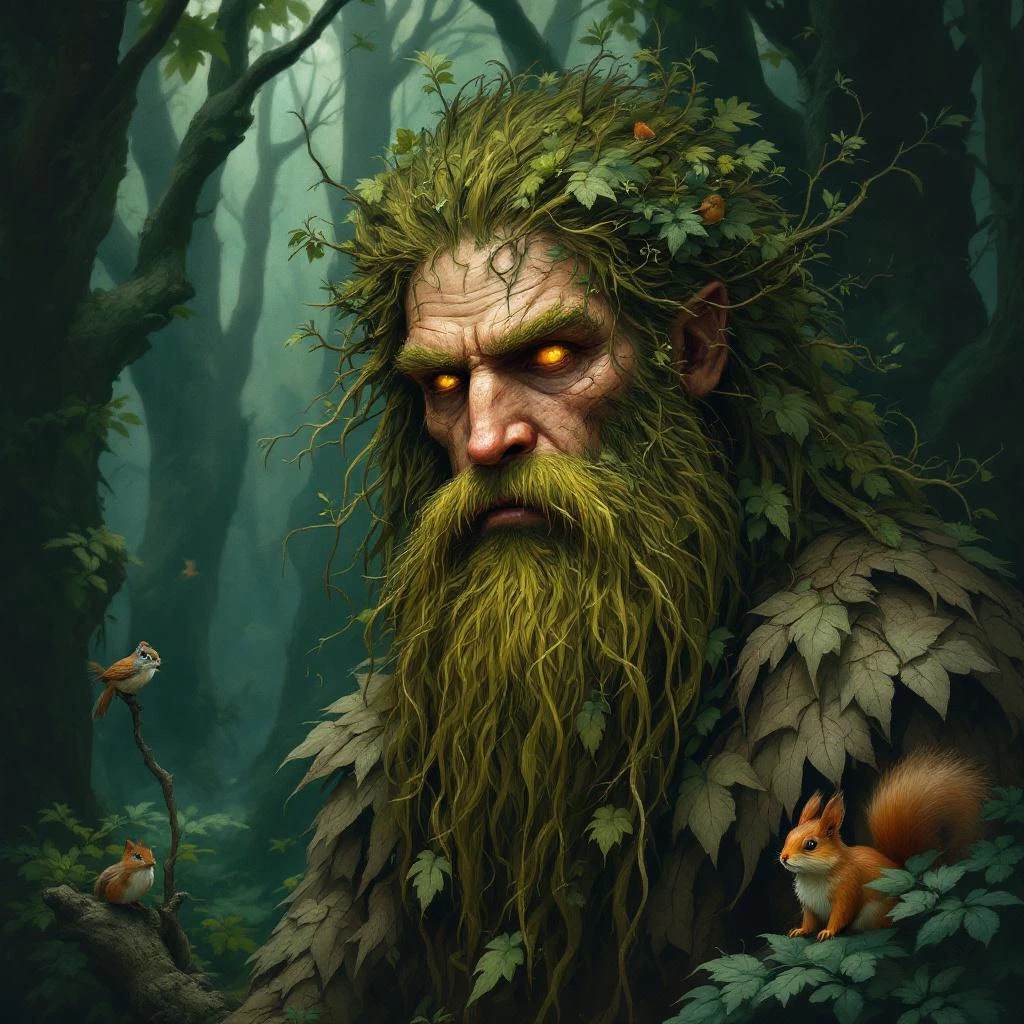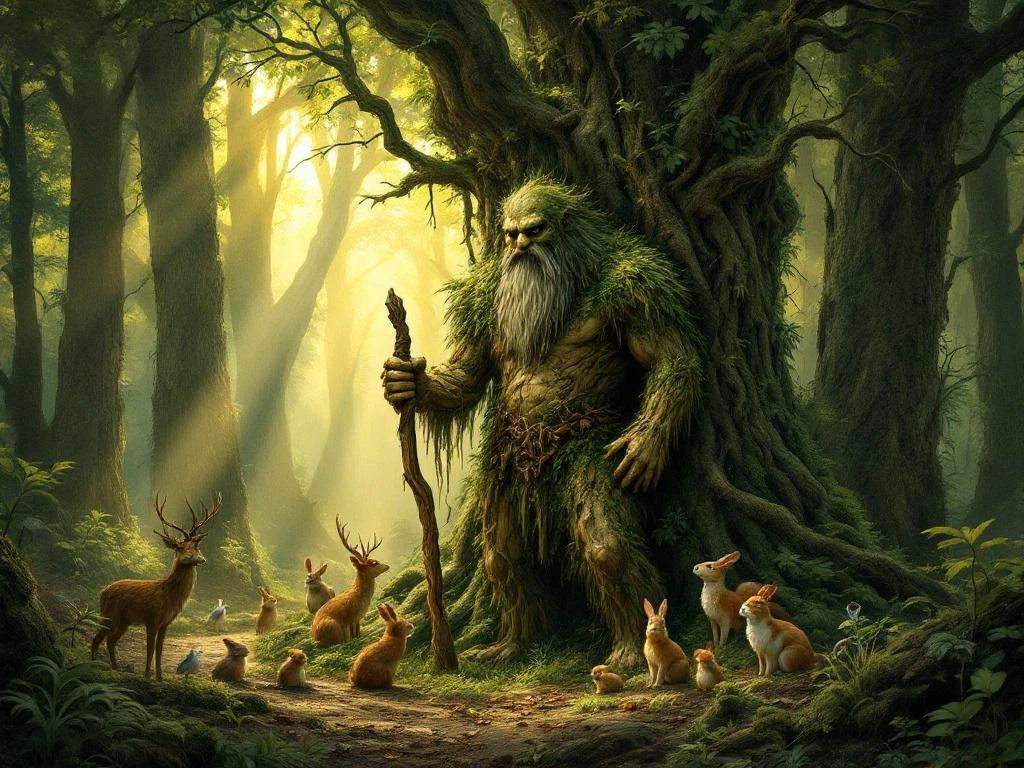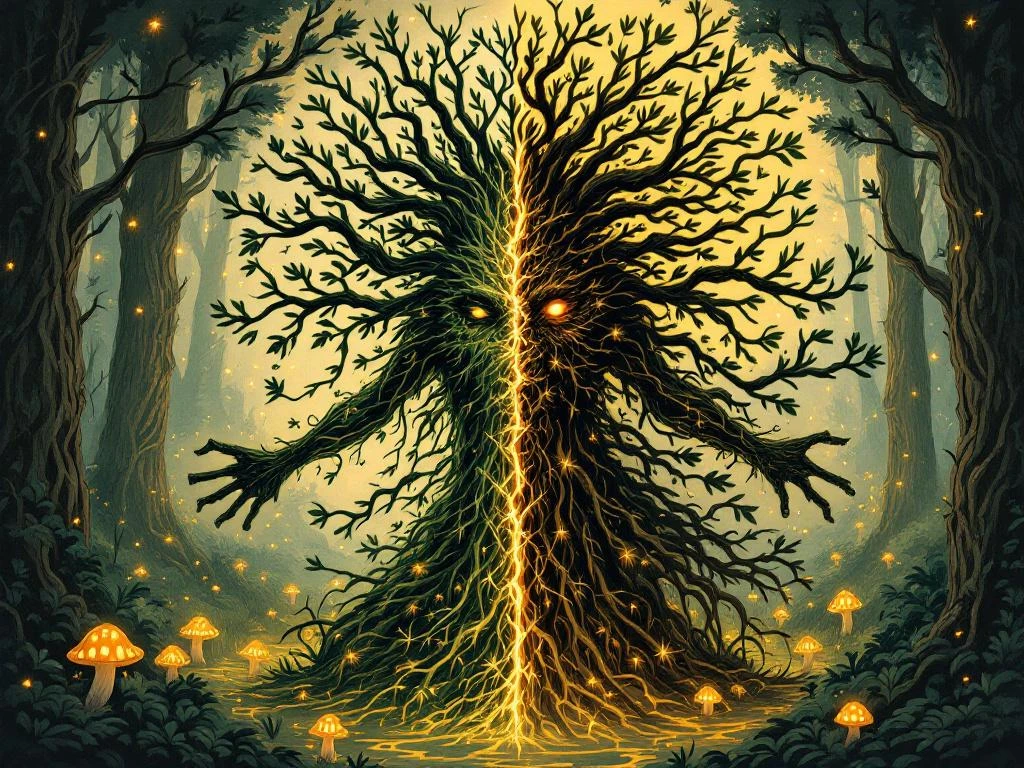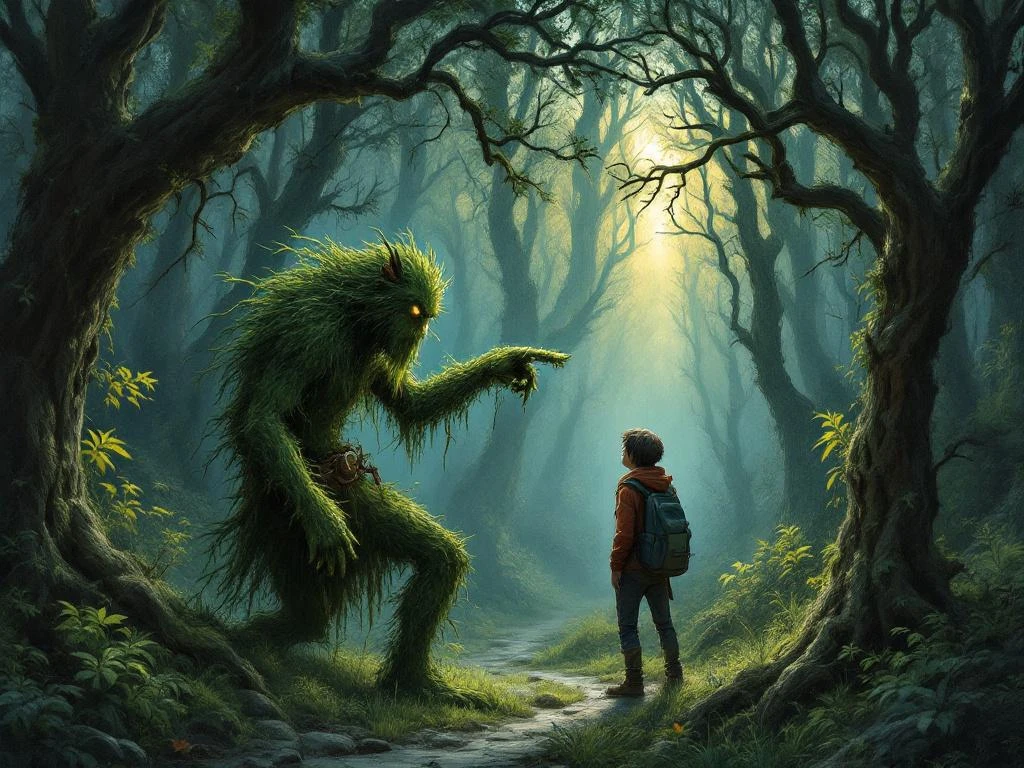Leshy
TricksterA forest guardian spirit in Slavic folklore who can lead travelers astray or help those who respect the woods.

Origins & Mythology
The Leshy (Леший, also spelled Leshiy) is one of the most important nature spirits in Slavic mythology. The name derives from "les" (лес), meaning "forest" in Russian and other Slavic languages. As the guardian spirit of the forest, the Leshy predates Christianity in Slavic lands and represents ancient animistic beliefs about the living spirit of the woodland.
Archaeological and folkloric evidence suggests that belief in forest spirits like the Leshy dates back to the earliest Slavic settlements. These beliefs likely evolved from even older Indo-European traditions of forest deities and nature spirits.
Unlike many Slavic mythological figures that were demonized after Christianization, the Leshy retained a more neutral role in folklore, representing the wild, untamed aspects of nature that could be either helpful or harmful depending on how humans approached the forest.
Characteristics & Abilities
The Leshy is described with highly variable characteristics, reflecting the unpredictable nature of the forest itself:
- Shape-shifting Ability: Can appear as a tall man, an animal, or even mimic the voices of loved ones to lead travelers astray. Sometimes appears as an ordinary peasant or woodsman.
- Size Manipulation: Can change his height from as small as grass to as tall as the trees, often described as being "taller than the trees when among trees, shorter than grass when among grass."
- Forest Knowledge: Knows every path, stream, and hiding place in his domain. Can make familiar trails disappear or create new paths that lead nowhere.
- Protective Nature: Guards the forest and its creatures, particularly during breeding seasons. Punishes those who harm the forest needlessly.
- Trickster Qualities: Enjoys playing pranks on humans, from mild mischief like hiding objects to more serious consequences like leading people in circles for hours.
The Leshy is often depicted as having green hair and beard, eyes that glow like embers, and clothing made of bark and leaves. He may lack eyebrows and eyelashes, and his footprints are sometimes said to be deeper than normal.
Gallery

A Leshy appearing as a tall figure among the trees

The Leshy in disguise as an old man helping a lost traveler

Mushroom rings and strange lights attributed to Leshy activity
Cultural Impact
The Leshy represents the complex relationship between humans and the natural world in Slavic culture. Unlike purely malevolent demons, the Leshy embodies the principle that nature must be respected and approached with proper reverence.
Traditional Russian culture maintained numerous customs related to forest spirits like the Leshy. Hunters and woodcutters would often perform rituals or leave offerings before entering deep forests. The concept influenced real-world forest management and conservation practices.
In Russian literature, the Leshy influenced works by authors like Alexander Pushkin and Nikolai Gogol, who incorporated forest spirits into their stories as symbols of Russia's wild, unconquered nature.
Modern environmental movements in Russia sometimes invoke the Leshy as a symbol of forest protection and the need to maintain harmony between human development and natural preservation.
The character has also appeared in contemporary fantasy literature and games, both within Russia and internationally, as interest in Slavic mythology has grown.
Related Characters
- Baba Yaga — Fellow forest-dwelling supernatural being
References & Further Reading
- Russian Folk Beliefs (Linda Ivanits)
- Slavic Mythology and Folklore traditions
- The Flying Ship (potential appearance as mysterious old man)
- Russian Forest Folklore collections